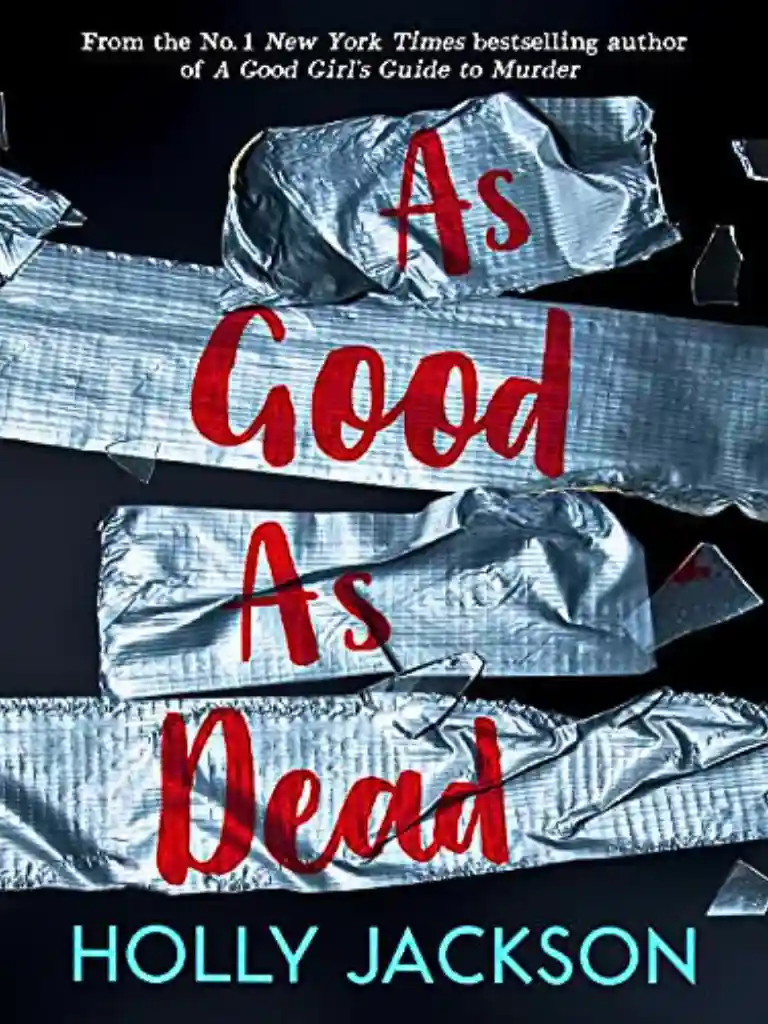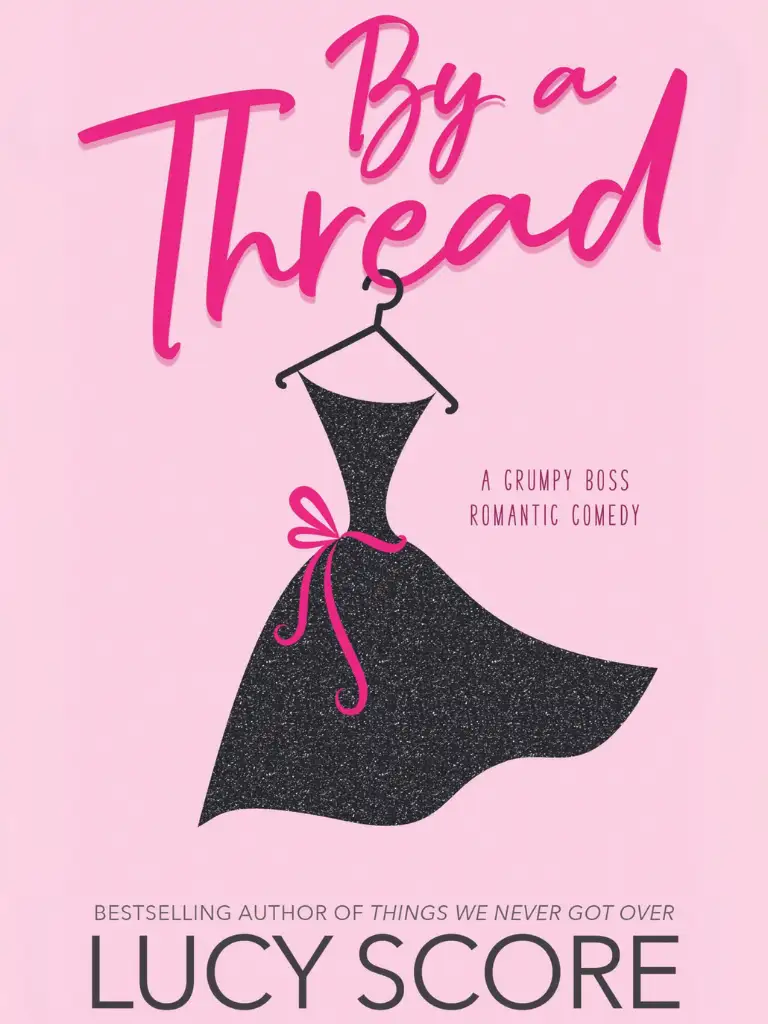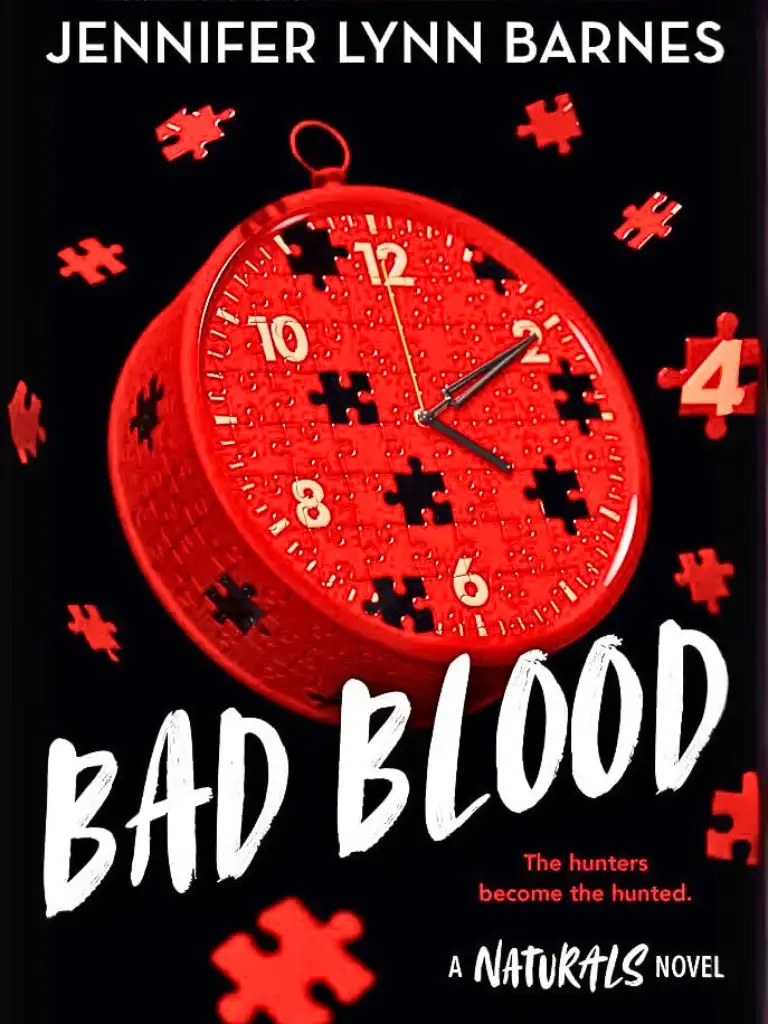Ashe, good for caske hoopes: and fneede require, plow worke, as alfo for many things els.
– A briefe and true report of the newfound land of Virginia by Thomas
Harlot servant to Sir Walter Raleigh – “a member of the Colony, and there imployed
in difcouering.”
Though Karen and Navidson both went back to Ash Tree Lane, Karen did not go there for the house. As she explains in a video entry: “I’m going because of Navy.”
During the first week of April, she stayed in close contact with Reston who made the long drive from Charlottesville more than a few times. As we can see for ourselves, Navidson’s car never moves from the driveway and the house continues to remain empty. In the living room a closet still stands in place of the hallway, while upstairs the space between the master bedroom and the children’s bedroom is lost to a wall.
At the start of the second week of April, Karen realizes she will have to leave New York. Daisy and Chad seem to have shaken off the debilitating effects of the house and their grandmother is more than happy to look after them while Karen is gone, believing her daughter’s trip will take her one step closer toward selling the house and suing Navidson.
On April 9th, Karen heads south to Virginia. She checks into a Days Inn but instead of going directly to the house makes an appointment with Alicia Rosenbaum. The real estate agent is more than happy to see Karen and discuss the prospects of putting the house on the market.
“Oh lord” she exclaims when she sees the Hi 8 in Karen’s hands. “Don’t point that at me. I’m not at all photogenic.” Karen sets the camera down on a file cabinet but leaves it on, thus providing a high-angle view of the office and both women.
Karen probably planned to have a short discussion with Alicia Rosenbaum about the sale of the house, but the real estate agent’s uncensored shock changes everything. “You look terrible” she says abruptly. “Are you alright, honey?” And so with that, what was supposed to have been a business meeting instantly becomes something else, something otherly, a sisterly get together where one woman reads in another signs of strain invisible to a man and sometimes even a mother.
Rosenbaum fills a mug with hot water and hunts around in a cabinet for some tea bags. Slowly but surely Karen begins to talk about the separation. “I don’t know,” Karen fmally says as she stirs her chamomile tea. “I haven’t seen him in almost six months.”
“Oh dear, I’m so sorry.”
Karen keeps turning the spoon in small circles but cannot quite stop the tears. Rosenbaum comes around the desk and gives Karen a hug. Then pulling up a chair tries her best to offer some consolation: “Well at the very
least, don’t worry about the house. It always sells.” Karen stops stirring the tea.
“Always?” she asks.
“After you came to me with that whole mysterious closet bit,” Rosenbaum continues, ignoring the phone as it starts to ring. “I did a little research. I mean I’m as new to this town as you all were, though I am southern born. Truth be told, I hoped to find some kind of ghostliness. [She laughs] All I found was a pretty comprehensive list of owners. A lot of ’em. Four in the last eleven years. Almost twenty in the last fifty. No one seems to stay there for more than a few years. Some died, heart attacks that sort of thing and the rest just disappeared. I mean we lost track of ’em. One man said the place was too roomy, another one called it ‘unstable.’ I went ahead and checked if the house was built on an old Indian burial ground.”
“And?”
“Nope. In fact, definitely not. It’s all too marshy with winter rains and the James River nearby. Not a good place for a cemetery. So I looked for some murder or witch burning-though I knew, of course, that had all been Massachusetts folk. Nothing.”
“Oh well.”
“Did you ever see any ghosts?”
“Never.”
“Too bad. Virginia, you know, has a tradition of ghosts-though I’ve never seen one.”
“Virginia does?” Karen asks softly.
“Oh my yes. The curse tree, the ghost of Miss Evelyn Byrd, Lady Ann Skipwith, ghost alley, and lord knows a whole handful more. [394-See L.
B. Taylor, Jr.’s The Ghosts of Virginia (Progress Printing Co., Inc., 1993) For a more international look at hauntings consider E. T. Bennett’s Apparitions & Haunted Houses: A Survey of Evidence (London; Faber & Faber, 1939); Commander R. T. Gould, R. N.’s Oddities; A Book of
Unexplained Facts (1928); Walter F. Prince’s The Psychic in the House
(Boston: Boston Society for Psychical Research, 1926); and Suzy Smith’s
Haunted Houses for the Million (Bell Publishing Co., 1967).]
Unfortunately, the only thing distinguished about your home’s past, but I guess it’s part of everybody’s past around here, and it’s no mystery either, would be the colony, the Jamestown Colony.”
It is not surprising The Navidson Record does not pause to consider this reference, especially considering that Karen is far more concerned about the house and Navidson’s whereabouts than she is with 17th century history. However having some familiarity with the bloody and painful origins of that particular toe hold in the new world reveals just how old the roots of that house really are.
Thanks to The London Company, on May 2, 1607, 105 colonists were deposited on a marshy peninsula where they established what soon became known as the Jamestown Colony. Despite pestilence, starvation, and frequent massacres carried out by native Indians, John Smith effectively held the village together until an injury forced him to return to England. The ensuing winter of 1609-1610 almost killed everyone and had it not been for Lord De Ia Wart’s timely arrival with supplies those still living would have fled. [395-Consider the interesting mention in Rupert L.
Everett’s Gallantrie and Hardship in the Newfoundland (London: Samson
& Sons Publishing Company, Inc., 1673), where a colonist remarked how “Waif in Fray sure was all tabled Balls, full with much Delight and of course strange Veering Spirit.”]
With the help of John Rolfe’s tobacco industry, the marriage of Pocahontas, and the naming of Jamestown as the Virginia capital, the colony survived. However Nathaniel Bacon’s fierce battle with the tidewater aristocrat Sir William Berkeley soon left the village in flames. Eventually the capital of Virginia was moved to Williamsburg and the settlement quickly decayed. In 1934 when park excavations began, very little remained of the site. As Park Warden Davis Manatok reported, “The marsh land has obscured if not completely consumed the monuments of the colony.” [396- Virginia State Park Report (Virginia State Press, v. 12,
April 1975), P. 1,173.]
AU of which is relevant only because of a strange set of pages currently held at the Lacuna Rare Books Library at Horenew College m South Carolina.
Supposedly the journal in question first turned up at The Wishart Bookstore in Boston. It had apparently been mixed in with several crates of books dropped off from a nearby estate. “Most of it was dreck” said owner Laurence Tack. “Old paperbacks, second rate volumes of Sidney Sheldon,
Harold Robbins, and the like. No one here paid them much attention.” [397 -Personal interview with Laurence Tack, May 4, 1996.]
Eventually the journal was bought for a remarkable $48.00 when a Boston University student noticed “Wart” penciled inside the cover of the badly damaged volume. As she soon discovered, the book was not De la Wart’s but one he had kept in his library. It seems that prior to Warr’s arrival, during “the starving time” of the winter of 1610, three men had left the Jamestown Colony in search of game. As the journal reveals, they traveled for several days until they stumbled onto an icy field where they camped for the night. The following spring two of their thawing bodies were found along with this priceless document.
For the most part, the entries concern the quest for game, the severe weather and the inevitable understanding that cold and hunger were fast colluding into the singular sensation of death:
18 Janiuere, 1610 We fearch for deere or other Game and aiwayes there is nothing. Tiggs believef our luck will change.
[398-This sporadic “f” for “s” stuff mystifies me, [399-Mr. Truant has mistaken the long “S” for an “f.” John Bell the publisher for British Theatre abolished the long S” back in 1775. In 1786. Benjamin Franklin indirectly approved of the decision when he wrote that “the Round s begins to be the Mode and In nice printing the Long S Is rejected entirely.” – Ed.] but I don’t care anymore. I’m getting the fuck out of here. Good thing too, fince I’m also being evicted from my apartment for failure to pay. It took them all of January, February and moft of March to do it but here it is the end of March and if I’m not out by tomorrow, people will come for me. My plan’s to leave tonight and take a southern route all the way to Virginia, where I hope to find that place, or at the very least find some piece of reality that’s at the root of that place, which might in turn-I hope; I do, do hope-help me addrefs some of the awful havoc always tearing through me.
Luckily, I’ve managed to put enough money together to get the hell away. My Vif a was canceled a month ago but I had some good fortune selling my mother’s locket (though I kept the gold necklace).
It was that or the guns. Which may surprife you, but something about that dream I remembered changed me. Afterwards, juft looking at the dull silver made me feel like there was this horrendous weight around my neck, even though I wafn’t even wearing it. In fact, the idea of getting rid of it was no longer enough, I had to hate it as I got rid of it.
At leaf t I didn’t rush things. I found an appraifer, approached some ftores, never budged from my af king price. Apparently it was defigned by someone well known. I made $4,200. Though I will say this, as I was handing over that ftrange fhape-letter included-I felt an extraordinary amount of rage surge through me. For a moment I was sure the scars along my arms would catch fire and melt down to the bones. I pocketed the cafh and quickly ducked away, hurt, full of poifon and more than a little afraid I might try to inflict that hurt and poifon on someone elfe.
Maybe in some half-hearted attempt to tie up some loofe ends, I then dropped by the Fhop a couple of days later to say goodbye to everyone. Man, I muft look bad becaufe the woman who replaced me almoft screamed when she saw me walk through the door. Thumper wafn’t around but my boff promifed to give her the envelope I handed him.
“If I find out you didn’t give it her,” I said with a smile full of rotting teeth. “I’m going to burn your life down.”
We both laughed but I could tell he was glad to fee me go.
I had no doubt Thumper would get my gift.
The worft was Lude. He was nowhere around. Firft I tried his apartment, which was kind of weird, to find myfelf after more than a year slipping acrofs that same awful courtyard where Zampanô ufed to walk, and there’s still not a cat in sight, juft a breeze rustling through a handful of dying weeds warning away the illufion of time in the same language of a cemetery. For some reafon juft being there filled me with guilt, voices converging from behind thofe gloomy curtains of afternoon light, almoft as if drawn out of the dull earth itfeif, still bitter with winter, and gathering together there to accufe me, indict me for abandoning the book, for selling that stupid fucking locket, for running away now like a goddamn coward. And though no clouds or kites marred a sun as yellow as corn, some invifible punifhment still hung above me there like a foul rain, caufing even more rage to dump abruptly into my syftem, though where this reaction came from I’m at a loff to know. It waf almoft more than I could handle. I forced myfeif to knock on Lude’s door but when he didn’t anfwer I ran from there as faft as I could.
Eventually a bouncer at one of his haunts told me he’d been tagged bad enough to land him in the hofpital. It took a little while to get paft the receptionift, but when I finally did Lude rewarded me with this huge smile.
It made me want to cry.
“Hey Hoff, you came. Is this what it takes to get you out of your coffin?”
I couldn’t believe how terrible he looked. Both his eyes were blacker than charcoal. Even his normally large nofe was bigger than ufual, stuffed now with pounds of gauze. His jaw was a deep purple and all over his face capillaries had been ruthlessly shattered. I tried pulling in deep breaths but the kind of anger I was feeling caufed my vif ion to blur.
“Hey, hey, eafy there, Hoff,” Lude practically had to shout. “This is the beft thing that could of happened to me. I’m on my way to becoming a very rich man.”
Which actually did help calm me down. I poured him a cup of water and one for myfeif and then I sat down by his bed. Lude seemed genuinely pleafed by his battered condition. He treated his broken ribs and the tube draining his fractured tibia with newfound refpect: “My summer bonus,” he smiled, although the effort was somewhat warped.
The way Lude told it, he’d been delighting in the comforts of an idle hour fpent on Funset Plaza quaff ing his thirft with several falty margaritas when who should stroll by but Gdansk Man. He was still tweeked about the time Lude popped him in the nuts but he was even more fueled by something elfe. Apparently Kyrie had told him that I had accofted her in the supermarket and for some stupid reaf on she’d decided to add that Lude had been right there with me, maybe becaufe he was the one who introduced us in the first place. Anyway, bright enough not to make a public scene, that monfter known as Gdansk Man crept back to the parking lot and lay in wait for Lude. He had to wait for a long time but he was full of enough illconceived rage not to mind. Eventually Lude fucked down the laft drop of his drink, paid his bill and ambled away from Funset, back there, towards his mode of tranfportation, right past Gdansk Man.
Lude never had a chance, not even time for words, let alone one word, let alone a return ftrike. Gdansk Man didn’t hold anything back either and when it was over they had to send for an ambulance.
Lude laughed as he finifhed the story and then promptly coughed up a chunk of something brown.
“I owe you Hoff.”
I tried to act like I was following him but Lude knew me well enough to fee I wafn’t getting the moft important part. One of his swollen eyes attempted a wink.
uAs soon as I’m out of here, I’m taking him straight to court. I’ve
already been in touch with a few lawyers. It looks like Gdansk Man has quite a bit of money he’s going to have to be ready to part with. Then you and I are going straight to Vegas to lofe it all on red.”
Lude laughed again only thif time I waf relieved to fee he didn’t cough.
“Will you need me to teftify?” I afked, prepared to cancel my trip.
aNot neceffary. Three kitchen workers saw the whole thing. Bef ides Hoff, you look like you juft got out of a concentration camp. You’d probably scare off the jury.”
The hurt and ache eventually got the beft of Lude and he signaled the nurfe for more painkillers.
“Another perk,” he whifpered to me with a fading leer. I gueff some things never change. Lude’s chemical line of defenfe still seemed to be holding.
After he’d fallen afleep, I drove back to his apartment and slipped an envelope with $500 in it under his door. I figured he’d need a little something extra when he got out of there. Flaze paf fed me in the hail but pretended not to recognize me. I didn’t care. On my way out, I caught one laft glimpfe of the courtyard. It was empty but I still couldn’t fhake the feeling that something there was watching me.
Juft an hour ago, I found a flyer under the wiper of my car:
WANTED
50 People
We’ll pay you to lofe weight!
I actually had a good laugh over that one. You want to lofe weight, I thought to myfeif, well boy do I have something for you to read.
I threw some old clothes in the back and slipped the rifle and the two guns under the seats. Moft of the ammo I hid in socks which I tucked infide the spare tire.
The laft week has been particularly funny, though not at all, I affure you, funny. Everywhere the jacarandas are bloffoming. People go around faying how beautiful they are. Me, they only unsettle, filling me with dread and now, strangely enough, a faint sense of fury. As foon as I finifh this note, I plan to load the book and everything elfe into that old black trunk and drag it down to a ftorage unit I rented in Culver city for a couple hundred bucks. Then I’m gone. I’m sorry I didn’t get farther than this. Who knows what I’ll find back eaft, maybe fleep, maybe a calm, hopefully the path to quiet the fea, this fea, my fea.
Likewife we muft also believe or elfe in the name of the Lorde take charge of the Knowledge that we are all dead men.
20 Janiuere, 1610 More fnow. Bitter cold. This is a terrible Place we have stumbled on. It has been a Week fince we haue fpied one living thing. Were it not for the ftorm we would have abandoned it. Verm was plagued by many bad Dreames last night.
21 Janiuere, 1610 The ftorm will not break. Verm went out to hunt but returned within the houre. The Wind makes a wicked found in the Woods. Ftrange as it muft feem, Tiggs, Verm, and I take comfort in the found. I fear much more the filence here. Verm tellf me he dreamt of Bones last night. I dreame of the Sunne.
22 Janiuere, 1610 We are dying. No food. No theker. Tiggs dreamt he faw all fnow about us turn Red with blood.
And then the last entry:
23 Janiuere, 1610
Ftaires! We haue found ftaires! [400-Jamestown Colony Papers: The
Tiggs, Verm & I Diary (Lacuna Library founded by The National Heritage Society) v. xxiii. n. 139, January 1610, p. 18-25.]
Nowhere in Lord De la Waif’s personal journals is there a mention of stairs or any clue about what might have happened to the third body. Warr, however, does refer to the journal as a clear example of death’s madness and in a separate letter consigns the delicate relic to the flames. Fortunately the order, for whatever reason, was not carried out and the journal survived, winding up in a Boston book store with only Warr’s name to link the fragile yellow pages to this continent’s heritage.
Nevertheless, while the journal may offer some proof that NavIdson’s extraordinary property existed almost four hundred years ago, why that particular location [401-The exact location of the house has been subject to a great deal of speculation. Many feel it belongs somewhere in the environs of Richmond. However Ray X. Lawlor, English professor emeritus at the University of Virginia, places Ash Tree Lane “closer to California Crossroads. Certainly not far from Colonial Williamsburg and the original
Jamestown colony. South of Lake Powell but most assuredly northwest of
Bacons Castle.” See Lawlor’s “Which Side of the James?” in Zyzzyva, fall 1996, p. 187.] proved so significant remains unanswered. In 1995, parapsychologist Lucinda S. Hausmaninger claimed that Navidson’s place was analogous to the blind spot created by the optic nerve in the retina:
“It is a place of processing, of sense-making, of seeing.” [402-Lucinda S. Hausmaninger’s “Oh Say Can You See” in The Richmond Lag Zine, v. 119, April 1995, p. 33.] However, she soon altered this supposition, describing it as “the omphalos of all e are.” [403-Lucinda S.
Hausmaninger’s “The Navy Navel” in San Clemente Prang Vibe, v. 4, winter 1996, p. vii.] It did not matter that the house existed in Virginia, only that it existed in one place: “One place, one (eventual) meaning.” [404- Ibid., p. viii.] Of course recent discoveries shatter both of Hausmaninger’s theories. [405-See Appendix C. – Ed.]
As everyone knows, instead of delving into the question of location or the history of the Jamestown Colony, The Navidson Record focuses on Alicia Rosenbaum in her dingy little office talking to Karen about her troubles. It may very well be the best response of all: tea, comfort, and social intercourse. Perhaps Rosenbaum’s conclusion is even the best: “lord knows why but no one ever seems comfortable staying there,” as if to imply in a larger way that there are some places in this world which no one will ever possess or inhabit.
Karen may hate the house but she needs Navidson. When the video tape flickers back to life, it is 9:30 P.M. and Ash Tree Lane is dark. Alicia Rosenbaum waits in her car, engine idling, headlights plastering the front door.
Slowly Karen makes her way up the walk, her shadow falling across the door step. For a moment she fumbles with her keys. There is the brief click of teeth on pins in the heart of the dead bolt and then the door swings open. In the foyer, we can see almost six months of mail strewn on the floor, surrounded by wisps of dust.
Karen’s breathing increases: “I don’t know if I can do this” (then shouting) “Navy! Navy, are you in there?!” But when she finally locates the light switch and discovers the power has been turned off- “Oh shit. No way – ” – she backs out of the house and into a jarring jump cut which returns us again to the front of the house, this time without Alicia Rosenbaum, evening now replaced by beady sunlight. April 10th, 11:27 PM. Everything is green, pleasant, and starting to bloom. Karen has avoided the B-movie cliché of choosing evening as the time to explore a dangerous house. Of course real horror does not depend upon the melodrama of shadows or even the conspiracies of night.
Once again Karen unlocks the front door and tries the switch. This time a flood of electric light indicates all is well with the power company. “Thank you Edison,” Karen murmurs, sunshine and electricity steeling her resolve.
The first thing she points the Hi 8 at are the infamous bookshelves upstairs. They are flush with the walls. Furthermore, as Reston also reported, the closet space has vanished. Finally, she goes back down to the living room, preparing to face the horror which we might imagine still reaches out of her past like a claw. She approaches the door on the north wall. Perhaps she hopes Reston has locked it and taken the keys, but as she discovers soon enough, the door opens effortlessly.
Still, there is no infernal corridor. No lightless and lifeless place. There is only a closet barely a foot and a half deep with white walls, a strip of molding, and all of it slashed from ceiling to floor with daylight streaming in through the windows behind her.
Karen actually laughs but her laughter comes up short. Her only hope of finding Navidson had been to confront what terrified her most. Now without a reason to be afraid, Karen suddenly finds herself without a reason to hope.
After spending the first few nights at the Days Inn, Karen decides to move back into the house. Reston visits her periodically, and each time he comes they go over every alcove and corner looking for some sign of Navidson. They never find anything. Reston offers to stay there with her but Karen says she actually wants to be alone. He looks noticeably relieved when she insists on seeing him to his van.
The following week, Alicia Rosenbaum starts bringing by prospective buyers. A couple of newlyweds seems especially taken by the place. “It’s so cute” responds the pregnant wife.” Small but especially charming,” adds the husband. After they leave, Karen tells Rosenbaum she has changed her mind and will at least for the time being still hold onto the house.
Every morning and evening, she calls Daisy and Chad on her cellular phone. At first they want to know if she is with their father, but soon they stop asking. Karen spends the rest of her day writing in a journal. As she has turned back on all the wall mounted Hi 8s and kept them resupplied with fresh tapes, there is ample footage of her hard at work at this task, filling page after page, just as she sometimes fills the house with peals of laughter or now and then the broken notes of a cry.
Though she eventually uses up the entire volume, not one word is ever visible in The Navidson Record. To this day the contents of her journal remain a mystery. Professor Cora Minehart M.S., Ph.D. argues that the actual words are irrelevant: “process outweighs product.” [406-Cora Minehart’s Recovery: Methods and Manner with an introduction by Patricia B. Nesseiroade (New York: AMACOM Books, 1994), p. 11.] Others, however, have gone to great lengths to suggest a miraculous and secret history enfolded within those pages. [407-See Darren Meen’s GatherEd
God (New York Hyperion, I 995) and Lynn Rembold’s Stations of Eleven (Norman, Oklahoma: University of Oklahoma Press, 1996).] Katherine Dunn is rumoured to have invented her own version of Karen’s journal.
Karen, however, does not restrict her activities to just writing. She frequently retreats outside where she works on the garden, weeding, clipping, and even planting. We often find her singing quietly to herself, anything from popular tunes, old Slavic lullabies, to a song about how many ways her life has changed and how she would like to get her feet back on the ground.
It seems that the most significant observations concerning this segment concern Karen’s smile. There is no question it has changed. Lester T. Ochs has traced its evolving shape from Karen’s days as a cover girl, through the months spent living at the house, the prolonged separation in New York, to her eventual return to the house:
Whether on the cover of Glamour or Vogue, Karen never failed to form her lips into those faultlessly symmetrical curves, parted just enough to coyly remark on her barely hidden teeth, so perfectly poised between shadow and light, always guaranteed to spark fantasies of further interiority. No matter which magazine she appeared in, she always produced the same creation over and over again. Even after they moved to Ash Tree Lane, Karen still offered up the same art to whomever she encountered. The house, however, changed that. It deconstructed her smile until by the time they had escaped she had no smile at all.
Then further on:
By the time she returned to Virginia, some expression of joy and relief, albeit rare, was also returning. The big difference though was that now her smile was completely unmannered. The curve of each lip no longer mirrored the other. The interplay was harmonic, enacting a ceaseless dance of comment and compliment, revealing or entirely concealing her teeth, one smile often containing a hundred. Her expression was no longer a frozen structure but a melody which for the first time accurately reflected how she was feeling inside. [408-Lester T. Ochs’ Smile (Middletown, CT: University Press of New England’ Wesleyan University Press, 1996), p. 8791.]
This of course responds to the extraordinary moment on the evening of May 4th, when surrounded by candles, Karen suddenly beams brighter than she has before, running her hands through her hair, almost laughing, only to cover her face a few moments later, her shoulders shaking as she starts to weep. Her reactions seem entirely unmotivated until the following morning when she offers a startling revelation.
“He’s still alive,” she tells Reston over the phone. “I heard him last night. I couldn’t understand what he said. But I know I heard his voice.”
Reston arrives the next day and stays until midnight, never hearing a thing. He seems more than a little concerned about Karen’s mental health.
“If he is still in there Karen,” Reston says quietly. “He’s been there for over a month. I can’t see how there’s any way he could survive.”
But a few hours after Reston leaves, Karen smiles again, apparently catching somewhere inside her the faint voice of Navidson. This happens over and over again, whether late at night or in the middle of the day. Sometimes Karen calls out to him, sometimes she just wanders from room to room, pushing her ear against walls or floors. Then on the afternoon of May lOw, she finds in the children’s bedroom, born out of nowhere, Navidson’s clothes, remnants of his pack and sleeping bag, and scattered across the floor, from corner to corner, cartridges of film, boxes of 16mm, and easily a dozen video tapes.
She immediately calls Reston and tells him what has happened, asking him to drive over as soon as he can. Then she locates an AC adapter, plugs in a Hi 8 and begins rewinding one of the newly discovered tapes.
The angle from the room mounted camcorder does not provide a view of her Hi 8 screen. Only Karen’s face is visible. Unfortunately, for some reason, she is also slightly out of focus. In fact the only thing in focus is the wall behind her where some of Daisy and Chad’s drawings still hang. The shot lasts an uncomfortable fifteen seconds, until abruptly that immutable surface disappears. In less than a blink, the white wall along with the drawings secured with yellowing scotch tape vanishes into an inky black.
Since Karen faces the opposite direction, she fails to notice the change. Instead her attention remains fixed on the Hi 8 which has just finished rewinding the tape. But even as she pushes play, the yawn of dark does not waver. In fact it almost seems to be waiting for her, for the moment when she will finally divert her attention from the tiny screen and catch sight of the hoffor looming up behind her, which of course is exactly what she does do when she fmds out that the video tape shows.








